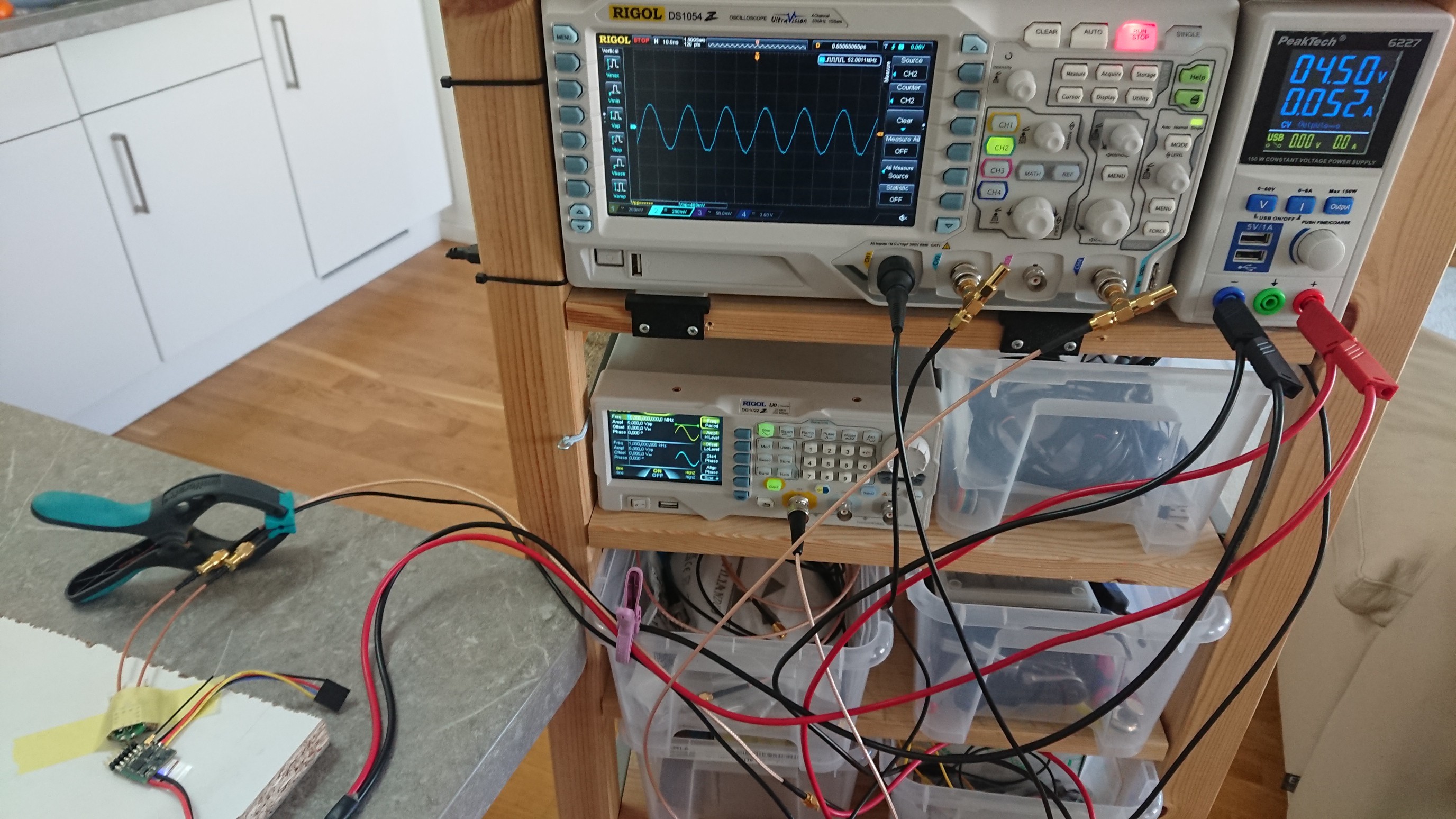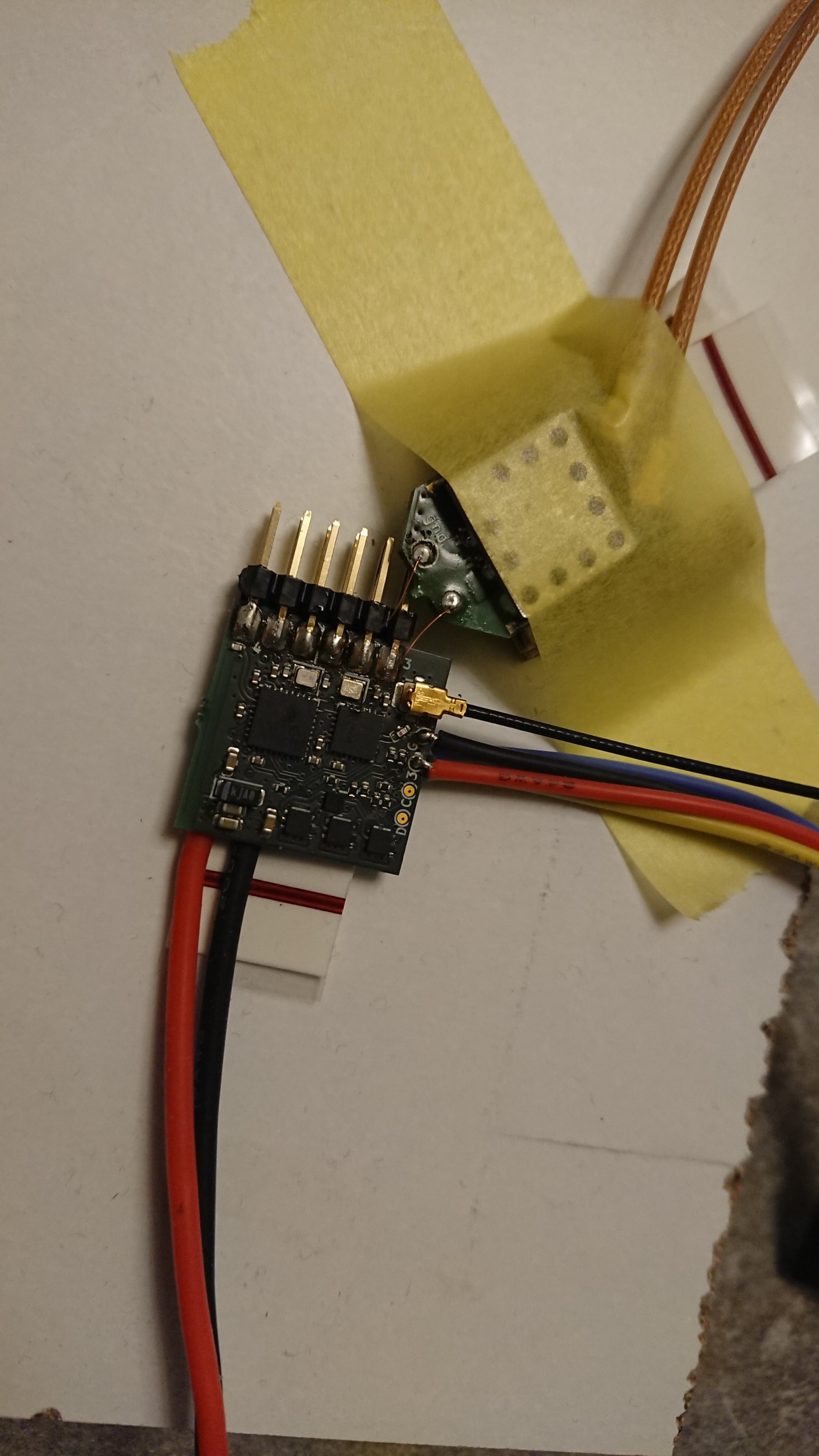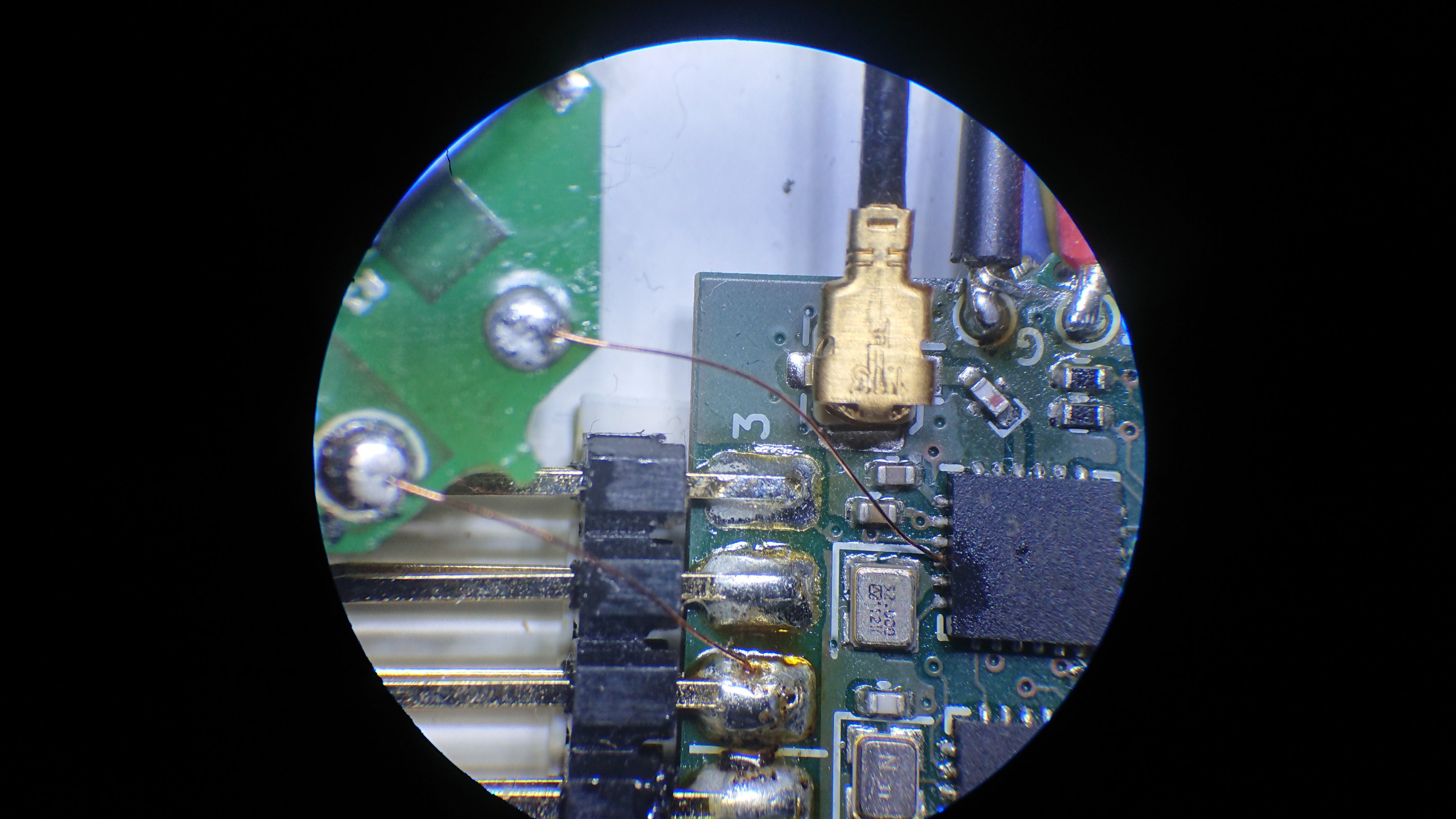My initial use case for a low capacitance probe was this: Is the oscillator of an SX1280 (RF Chip) on my PCB actually oscillating with the right frequency?
The setup:

A bit messy, ok. We have
- a power supply for the probe and the device under test (DUT)
- a signal generator (DG1022Z)
- an oscilloscope (DS1054Z)
- the DUT
- and the FETProbe
- plus some cables
Closeup of the DUT and probe:

And even closer:

The crystal in the DUT is a 52 MHz, 10 ppm part.
First of all it's important to note that the scope's timebase isn't terribly accurate at +/- 25 ppm. Trying to get meaningful numbers for a 10 ppm crystal won't go too well without a more accurate reference. That's why I added the signal generator to the setup, because its timebase has only +/- 1 ppm. Both devices also had half an hour of time to get to temperature.
Making a reference measurement
- Signal generator set to 10 MHz, 5 Vpp, sine output
- Fed into a scope channel
- Scope configured to use its frequency counter to measure the frequency
The scope reported those 10 MHz as 10.0002 MHz in the display. That means that the scope's timebase is running a bit slower by roughly -20 ppm if we assume the signal generator to be accurate. That's still within the +/- 25 ppm stated in the datasheet.
So whatever frequency it reports for further measurements, the actual measured frequency will be roughly 20 ppm slower than what is displayed.
Measuring with a passive probe
The stock passive probe (PVP2150) set to 10X gives us 52.0003 MHz displayed. Adjusting for the scope's timebase error, that's 51.99926 MHz actual frequency or -14.2 ppm. Amplitude roughly 0.5 Vpp.
That would be out of tolerance for the application. In really bad cases, the probe's input capacitance could even stop the oscillator.
Measuring with the FETProbe
With the FETProbe, the scope displayed 52.0011 MHz. Again adjusting for the timebase error, we get 52.00006 MHz actual frequency or +1.2 ppm. That's much better! Amplitude was also around 0.5 Vpp.
The FETProbe's low load on the circuit really made a difference here.
 Christoph
Christoph
Discussions
Become a Hackaday.io Member
Create an account to leave a comment. Already have an account? Log In.